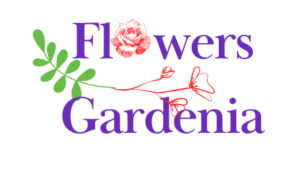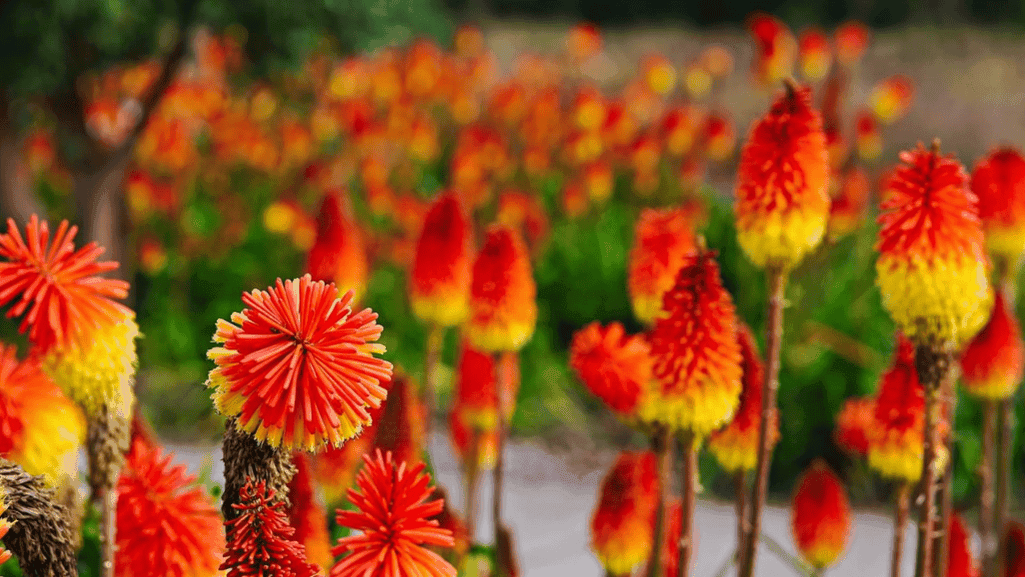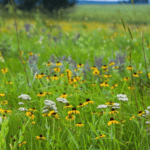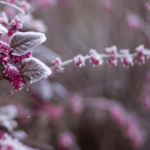
Beautiful flowers gardenia Plants For Your homes

Want to make your garden stand out? Big perennial plants are the way to go! These plants can grow up to 10 feet tall. They add height and color to your garden, lasting year after year.
There are many big plants to choose from. Like the hardy hibiscus and the fragrant oriental lilies. Native plants like Joe Pye weed and giant black-eyed Susans are also great. They attract butterflies and bees.
Delphiniums, hollyhocks, and plume poppies are also great choices. They can be focal points or even privacy screens. Your garden will look amazing.
Whether your garden gets a lot of sun or is shady, there’s a big perennial for you. These plants are easy to care for. They’re a smart choice for any gardener. So, why not elevate your garden with these stunning plants?
https://www.youtube.com/watch?v=YLDzE6LC-6M
Perennial plants are key to a beautiful garden, offering years of beauty and interest. Massive ornamental plants and towering perennial blooms add drama and grandeur. They come in many forms, like giant perennial flowers, tall perennial shrubs, and massive perennial bushes.
Perennials are divided into three groups: herbaceous, evergreen, and hardy plants. They range from small ground covers to tall giants. Most perennials grow quickly, reaching their full size in a few years.
Perennials are the perfect choice for gardeners looking to create a stunning, low-maintenance landscape that will continue to thrive year after year.
When picking big perennial plants, consider hardiness zones, mature size, and growing conditions. Some popular choices include:
| Perennial Plant | Hardiness Zones | Mature Size |
|---|---|---|
| Butterbur (Petasites hybridus) | 5-9 | Up to 3 feet tall, 5 feet wide |
| ‘Sun King’ Spikenard (Aralia cordata ‘Sun King’) | 4-8 | Up to 6 feet tall and wide |
| Cardoon (Cynara cardunculus) | 7-9 | Up to 6 feet tall, 5 feet wide |
| ‘Britt Marie Crawford’ Ligularia (Ligularia dentata ‘Britt Marie Crawford’) | 4-8 | Up to 2 feet tall, 3 feet wide |
| ‘Sum and Substance’ Hosta (Hosta ‘Sum and Substance’) | 3-9 | Up to 3 feet tall, 6 feet wide |
Adding these impressive perennials to your garden will make it stunning. With the right care, they’ll keep looking beautiful for years.
Adding large perennial plants to your garden brings many benefits. These plants add beauty and serve practical uses. They make your garden more interesting and useful.
Tall perennial flowers are great for making privacy screens. They can hide ugly fences or walls. This creates a private and beautiful space in your garden.
Big plants also add height and depth to your garden. Mixing them with smaller plants makes your garden more interesting. Snapdragons (Antirrhinum majus) are good for adding height and color.
Perennials last longer than annuals and keep your garden colorful. They come back year after year. This means your garden stays beautiful for a long time.
| Characteristic | Annuals | Perennials |
|---|---|---|
| Lifespan | One growing season | Two years to several decades |
| Blooming Period | Early spring to first frost | Varies, often shorter than annuals |
| Maintenance | Requires frequent watering and replanting | Less frequent watering, no annual replanting |
| Soil Benefits | Minimal long-term soil improvements | Enhances soil structure and reduces erosion |
Perennials are also easier to care for than annuals. They can handle tough weather and need less water. This makes them perfect for those who don’t have a lot of time to garden.
When planning your garden, picking the perfect spot for your big perennial plants is key. These plants need the right amount of sun and shade, as well as good soil and drainage. By choosing wisely, you can create a beautiful garden that lasts for years.
Choosing the right spot for your big plants is crucial. Plants like hibiscus and delphiniums need at least 8 hours of sun a day. They bloom best in full sun.
But, some plants like goatsbeard prefer partial shade. They might not do well in too much sun. Always check what your plants need and pick the right spot.
Soil and drainage are also important. Most big plants need soil that drains well and is rich in organic matter. Adding organic matter can make the soil better for your plants.
Stay away from areas with heavy clay soil or poor drainage. These can cause root rot. If your soil is tough, consider choosing the right plant or amending the soil.
| Plant Type | Sun Requirements | Soil Requirements |
|---|---|---|
| Hibiscus | Full sun (8+ hours) | Well-drained, rich in organic matter |
| Delphinium | Full sun (8+ hours) | Well-drained, rich in organic matter |
| Goatsbeard | Partial shade | Well-drained, rich in organic matter |
Think about sun, shade, soil, and drainage when picking a spot for your big plants. With the right spot and care, they will thrive. Your garden will be beautiful for years.
Adding gigantic persistent perennials to your garden can make it stand out. These plants are not just tall; they also bloom beautifully for years. Here are some top picks for your garden:
The Hibiscus SUMMERIFIC® ‘Candy Crush’ can grow up to 4-4½ feet tall. It has huge flowers in pink, red, and white, giving your garden a tropical look. Its long-lasting blooms and foliage make it a great choice for any garden.
Oriental lilies can grow 4-6 feet tall. They come in many colors and have big, fragrant flowers. They look great in sunny spots and make your garden beautiful for years.
Joe Pye weed is a big native wildflower. It can grow up to 8 feet tall, perfect for borders or screens. Its flowers attract butterflies and are easy to care for.
Delphiniums add drama to your garden with their tall spikes of flowers. Some varieties can grow up to 3 feet tall. They come in blue, purple, white, and pink and are great for cutting. They like cool weather and well-draining soil.
| Perennial Plant | Height | Notable Features |
|---|---|---|
| Hibiscus SUMMERIFIC® ‘Candy Crush’ | 4-4½ feet | Large, tropical-looking flowers in vibrant colors |
| Oriental Lilies | 4-6 feet | Fragrant, showy blooms in various colors; excellent cut flowers |
| Joe Pye Weed | Up to 8 feet | Native wildflower; attracts butterflies; low maintenance |
| Delphinium elatum ‘Million Dollar Blue’ | 2½-3 feet | Stunning spikes of blue, purple, white, and pink flowers |
Adding huge perennial bushes, colossal shrubs, and giant plants to your garden needs careful planning. The right planting and care ensure they stay healthy and beautiful. Follow these tips to help your big plants grow well.
Start by planting your big perennials correctly. Here’s how:
After planting, give your perennials the right water and nutrients. Here’s what to do:
Pruning and deadheading keep your perennials looking great and growing well. Here’s how:
| Perennial Type | Division Time |
|---|---|
| Early blooming perennials (e.g., Astilbe, Peonies) | Early fall |
| Later flowering perennials (e.g., Black-eyed Susan, Daylily) | Spring |
| Rhizomatous perennials (e.g., Bearded Iris) | Late summer (when dormant) |
By following these tips, your huge perennial bushes, colossal shrubs, and giant plants will thrive. They’ll bring stunning beauty and joy to your garden for years.
Creating a stunning garden is more than just planting big plants. It’s about mixing different garden elements thoughtfully. Pairing tall plants with smaller ones, annuals, grasses, and shrubs makes your garden diverse and beautiful. This mix keeps your garden interesting all year.
Adding smaller plants to your garden creates a layered look. This ensures your garden stays colorful. For example, tall delphiniums look great with low sedum or colorful annuals like petunias. Other good matches include:
Ornamental grasses and shrubs add structure and texture to your garden. They offer interest all year. For example, Joe Pye Weed or giant hyssop look amazing with wispy grasses like fountain grass. Shrubs like hydrangeas or smokebush add depth and color. Some top shrub picks are:
| Tall Perennial | Complementary Plant | Effect |
|---|---|---|
| Delphinium | Sedum ‘Lemon Jade’ | Height contrast and color harmony |
| Joe Pye Weed | Switchgrass ‘Shenandoah’ | Textural interest and movement |
| Hollyhock | Weigela ‘Wine & Roses’ | Vertical accent and color contrast |
| Giant Hyssop | Catmint ‘Walker’s Low’ | Soft, billowing texture and color repetition |
The key to a harmonious garden is balancing color, texture, height, and bloom times. This ensures your garden is visually appealing.
By carefully mixing tall plants with smaller ones, grasses, and shrubs, you create a garden that’s both diverse and captivating. It will be a visual treat from spring to fall.
To keep your big plants healthy, you need to care for them well. Watch for pests, diseases, and other problems. This way, you can fix issues early and keep your plants looking great.
Even strong plants can get pests and diseases. Common problems include:
Use organic methods like insecticidal soaps or neem oil to fight pests. Remove sick leaves to stop diseases from spreading. Also, make sure plants have enough space and air to reduce pest and disease risks.
Big plants can get too crowded or weak over time. Divide them every 3-5 years to keep them healthy. Here’s how:
Dividing your plants regularly helps them grow well and live longer. You’ll also get new plants to grow or share.
| Plant Type | Division Frequency | Ideal Division Time |
|---|---|---|
| Ornamental grasses | Every 2-3 years | Spring or fall |
| Daylilies | Every 3-5 years | Spring or fall |
| Hostas | Every 3-5 years | Spring or fall |
| Peonies | Every 10-15 years | Fall |
A well-tended perennial garden shows a gardener’s love and dedication. With the right care, your plants will bring beauty and joy for years.
Watch for pests and diseases, divide your plants when needed, and give them the care they need. This way, your big plants will be the garden’s stars for many seasons.
When designing your garden, think about the size and spread of your plants. Big plants can be stunning focal points or a beautiful backdrop. Mix these plants with smaller ones for a balanced look.
Creating depth in your garden is key. Place taller plants at the back and shorter ones at the front. This makes your garden look layered and interesting. Use big plants to add height and dimension.
Mississippi State University Extension says plants should be grouped for a better look. Plant in odd numbers like three or seven for a natural feel. This works well with big plants.
Divide plants as they grow to multiply them without buying more. This saves money and keeps your garden looking good. It also helps your plants grow together for a fuller look.
Editing your garden is crucial for achieving a stunning and well-maintained landscape. Remove underperforming plants to make space for new additions, and restrict your plant palette to high-performing varieties for a more cohesive design.
Here are some tips for choosing big plants:
By following these tips, you can create a stunning garden. Watch your garden through the seasons to see what needs changing. With careful planning, your garden will be a beautiful showcase of big plants.
| Plant Name | Bloom Time | Sun Exposure | Height |
|---|---|---|---|
| Coneflowers | Summer | Full Sun | 2-4 feet |
| Shasta Daisies | Summer | Full Sun | 2-3 feet |
| Black Eyed Susans | Summer to Fall | Full Sun | 2-3 feet |
| Delphiniums | Summer | Full Sun to Part Shade | 4-6 feet |
For more info on big perennial plants, like pachysandra, visit Flowers Gardenia. Learning about each plant’s needs helps them thrive and keep your garden beautiful.
Adding giant herbaceous perennials to your garden is a smart choice. They make your garden look stunning and last long. These plants offer many benefits, like privacy and adding height to your garden.
When picking plants, think about the sun, soil, and water they need. Plants like hardy Hibiscus and fragrant Oriental Lilies are great choices. Perennial plants are key in permaculture, helping make farming more sustainable.
Pairing big plants with smaller ones and annuals makes your garden interesting. Keeping your plants healthy means they’ll stay beautiful for a long time. With the right care, your garden will be a beautiful place to relax.




